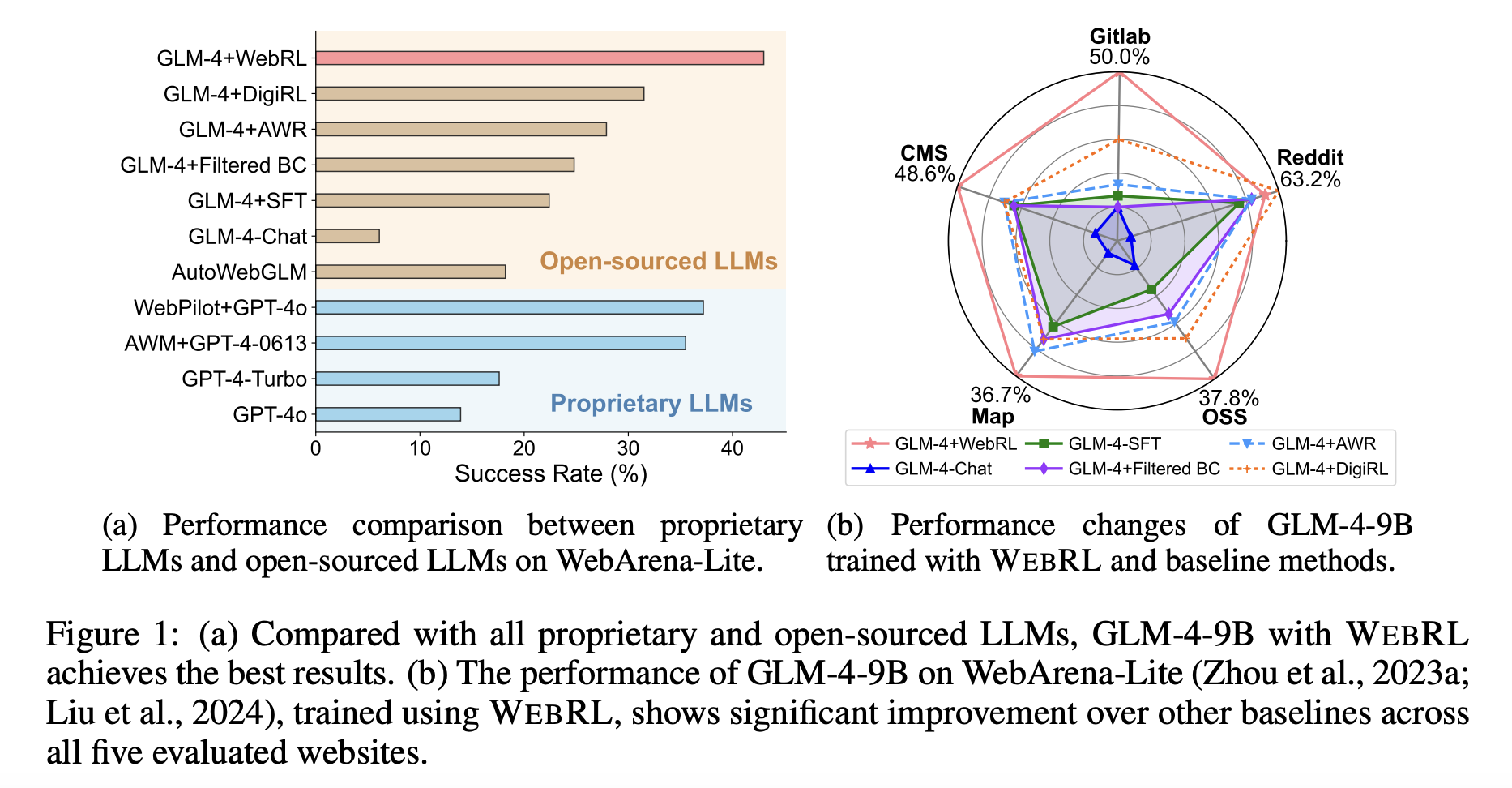
Understanding WEBRL: A New Approach to Training Web Agents
What are Large Language Models (LLMs)?
LLMs are advanced AI systems that can understand and generate human language. They have the potential to operate as independent agents on the web.
Challenges in Training LLMs as Web Agents
Training LLMs to perform online tasks faces several challenges:
– **Limited Training Tasks**: There are not enough predefined tasks for training.
– **Feedback Issues**: Success is hard to measure due to sparse and costly feedback.
– **Policy Drift**: Without a fixed training set, agents can lose their learning over time.
Current Solutions
Researchers are exploring two main approaches:
1. **LLMs as Agents**: Using LLMs without extensive training.
2. **Reinforcement Learning (RL)**: Applying RL techniques to improve decision-making in complex environments.
However, existing methods often struggle with limited feedback, only providing binary success or failure.
Introducing WEBRL
Researchers from Tsinghua University and Zhipu AI have developed **WEBRL**, a new framework that helps train high-performance web agents using open LLMs. It effectively tackles the challenges of:
– **Lack of Training Tasks**
– **Sparse Feedback**
– **Policy Drift**
Key Features of WEBRL
WEBRL includes three main components:
– **Self-Evolving Curriculum**: Automatically creates new tasks from previous failures.
– **Outcome-Supervised Reward Model**: Provides better feedback for learning.
– **Adaptive RL Strategies**: Ensures ongoing improvement in agent performance.
Benefits of WEBRL
– **Innovative Learning**: WEBRL generates new tasks, allowing agents to learn progressively.
– **Stability in Learning**: It reduces policy shifts, preventing the loss of previously learned skills.
– **Improved Performance**: Agents trained with WEBRL show higher accuracy in complex tasks compared to traditional methods.
Results and Impact
The Llama-3.1-8B model trained with WEBRL achieved an average accuracy of **42.4%**, outperforming existing methods. It excels in specific tasks, demonstrating its effectiveness in handling complex web interactions.
Conclusion
WEBRL represents a significant advancement in training LLM-based web agents, addressing critical challenges and enhancing the capabilities of open-source LLMs. This framework paves the way for more accessible and powerful autonomous web systems.
Stay Connected
For more insights, follow us on Twitter, join our Telegram Channel, and connect with our LinkedIn Group. Don’t forget to subscribe to our newsletter for updates!
Explore AI Solutions
If you want to leverage AI for your business, consider WEBRL. Here’s how you can get started:
– **Identify Automation Opportunities**: Find areas where AI can enhance customer interactions.
– **Define KPIs**: Set measurable goals for your AI initiatives.
– **Choose the Right Tools**: Select AI solutions that fit your needs.
– **Implement Gradually**: Start small, analyze results, and expand as needed.
For AI management advice, reach out to us at hello@itinai.com. Stay informed about AI trends on our Telegram and Twitter channels.




























